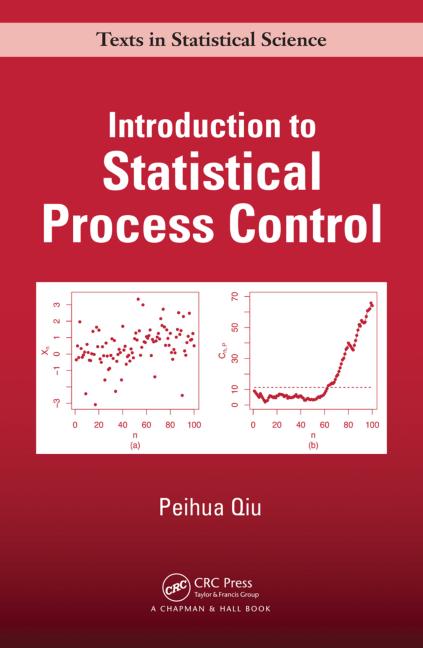 Peihua Qiu
Peihua Qiu
October 14, 2013 by Chapman and Hall/CRC
Textbook - 520 Pages - 100 B/W Illustrations
ISBN 9781439847992 - CAT# K12137
Series: Chapman & Hall/CRC Texts in Statistical Science
Appendix A
R Functions for SPC
Features- Explores the major advantages and limitations of traditional and state-of-the-art SPC methods
- Offers practical guidelines on implementing the techniques
- Examines the most recent research results in various areas, including univariate and multivariate nonparametric SPC, SPC based on change-point detection, and profile monitoring
- Keeps the mathematical and statistical prerequisites to a minimum, only requiring basic linear algebra, some calculus, and introductory statistics
- Provides more advanced or technical material in discussions at the end of each chapter, along with exercises that encourage hands-on practice with the methods
- Presents pseudo codes for important methods
- Includes all R functions and datasets on the author’s website
SummaryA major tool for quality control and management, statistical process control (SPC) monitors sequential processes, such as production lines and Internet traffic, to ensure that they work stably and satisfactorily. Along with covering traditional methods, Introduction to Statistical Process Control describes many recent SPC methods that improve upon the more established techniques. The author—a leading researcher on SPC—shows how these methods can handle new applications.
After exploring the role of SPC and other statistical methods in quality control and management, the book covers basic statistical concepts and methods useful in SPC. It then systematically describes traditional SPC charts, including the Shewhart, CUSUM, and EWMA charts, as well as recent control charts based on change-point detection and fundamental multivariate SPC charts under the normality assumption. The text also introduces novel univariate and multivariate control charts for cases when the normality assumption is invalid and discusses control charts for profile monitoring. All computations in the examples are solved using R, with R functions and datasets available for download on the author’s website.
Offering a systematic description of both traditional and newer SPC methods, this book is ideal as a primary textbook for a one-semester course in disciplines concerned with process quality control, such as statistics, industrial and systems engineering, and management sciences. It can also be used as a supplemental textbook for courses on quality improvement and system management. In addition, the book provides researchers with many useful, recent research results on SPC and gives quality control practitioners helpful guidelines on implementing up-to-date SPC techniques.

 扫码加好友,拉您进群
扫码加好友,拉您进群